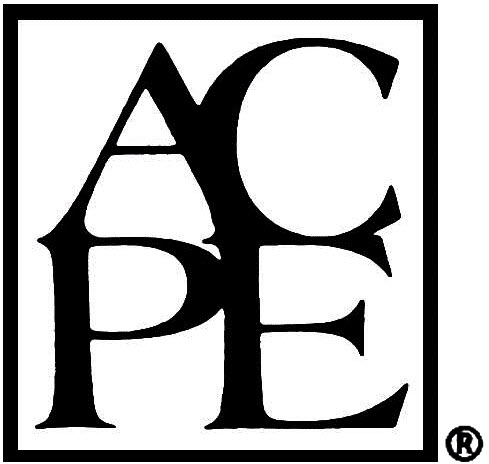Opioid Crisis: The Use of Naloxone in Preventing Opioid Overdose-Related Deaths
Pain Management/Opioids CE for Pharmacy Techs
Are you a Pharmacist? Check out the Pharmacist version of this course.
Course Summary
Opioid-related overdose deaths make up three-fourths of all overdose deaths in the United States. In order to reduce the number of deaths, efforts must be made to save patients who overdose on opioids. Naloxone, an opioid receptor antagonist, is the most effective medication to reverse the effects of an opioid overdose. Naloxone is available in a number of different formulations to make administration efficient and timely. Increasing access to naloxone, so it is readily available when needed, is vital to combating the opioid crisis.
Identify risk factors for opioid overdose
Discuss patient counseling points
Describe administration for naloxone dispensing in a community setting
Identify advantages to different naloxone formulations
Course Syllabus
I. Introduction
II. Treating Opioid Overdose with Naloxone
III. Short History of the Opioid Crisis
IV. A Brief Overview of Appropriate Opiate Use Indications
V. Opioid Use Dependence and Addiction
VI. Risk Factors for Opioid Overdose
1. Patient Demographics
2. Mental Health Diagnoses
3. Substance Use Disorders
4. Medical Comorbidities
5. Opioid Prescription Characteristics
6. Insurance
7. Reduced Tolerance and Administration Routes
VII. Mechanisms and Symptoms of Opioid Overdose
VIII. Prevention of Opioid Overdose
Medication-Assisted Treatment
IX. Responsible Prescribing of Opioids
X. Treating Opioid Overdose with Naloxone
1. Naloxone History
2. Naloxone Mechanism of Action
3. Naloxone Formulations
4. Naloxone Administration Information
5. Naloxone in Pregnancy
6. Adverse Effects Associated with Naloxone Rescue Therapy
XI. What can Pharmacy Teams do to Reduce Prescription Opioid Overdose?
XII. Summary
- Read the course objectives and faculty planner disclosure
- Read the course material
- Complete the post-test with a minimum score of 70% and complete the course evaluation form.
- Results are automatically submitted to CPE Monitor
Faculty Planner Disclosure
The following individuals were involved in the development of this activity: Amanda Mayer, PharmD, Jeff Goldberg, PharmD, BCPP, and Susan DePasquale, MSN, PMHNP-BC. There are no financial relationships relevant to this activity to report or disclose by any of the individuals involved in the development of this activity.
Unlabeled Use Disclosures
The information provided in this course is general in nature and it is solely designed to provide participants with continuing education credit(s). This course and materials are not meant to substitute for the independent, professional judgment of any participant regarding that participant’s professional practice, including but not limited to patient assessment, diagnosis, treatment and/or health management. Medical and pharmacy practices, rules, and laws vary from state to state, and this course does not cover the laws of each state; therefore, participants must consult the laws of their state as they relate to their professional practice. Healthcare professionals, including pharmacists and pharmacy technicians, must consult with their employer, healthcare facility, hospital, or other organization, for guidelines, protocols, and procedures they are to follow. The information provided in this course does not replace those guidelines, protocols, and procedures but is for academic purposes only, and this course’s limited purpose is for the completion of continuing education credits. Participants are advised and acknowledge that information related to medications, their administration, dosing, contraindications, adverse reactions, interactions, warnings, precautions, or accepted uses are constantly changing, and any person taking this course understands that such person must make an independent review of medication information prior to any patient assessment, diagnosis, treatment and/or health management. Any discussion of off-label use of any medication, device, or procedure is informational only and such uses are not endorsed hereby. Nothing contained in this course represents the opinions, views, judgments, or conclusions of RxCe.com LLC. RxCe.com LLC is not liable or responsible to any person for any inaccuracy, error, or omission with respect to this course, or course material.
Computer Hardware/Software Requirements
Please ensure the device you plan to use meets these requirements and specifications:
- Operating System: Windows 7,8,10, or 11 /Mac OS X 10.9 or later/iOS/Android
- Supported Browsers: Microsoft Edge, Firefox, Google Chrome, Safari, Opera
- A connection to the internet
- For Live Webinars or Conferences: GoToWebinar application for iOS, Android, Mac, or PC. You cannot 'call into' a live conference.
Rating: 4.94/5
Based on the ratings of 526 customers
- Target Audience: Pharmacy Tech
- Secondary Audiences: This educational activity is also for other healthcare professionals, such as nurses, physicians, or others who may be part of a healthcare team and may be interested in this educational topic. A healthcare team approach to patient care may be discussed in this activity, as applicable. No state board or professional organization has evaluated this activity to determine whether it meets the continuing education requirements of nurses, physicians, or other professions not listed under the “Target Audience” described above. Always verify with individual employers or supervisors whether they will accept this educational activity upon completion.
- Contact Hours: 1.0 (0.1 CEUs)
- Activity Release Date: 12/20/2022}
- Activity Expiration Date: 12/20/2025}
- Activity Type: Knowledge
- UAN: 0669-0000-22-105-H08-T
- Topic: Pain Management/Opioids
- CeBroker Number: 20-992936
Faculty:

RxCe.com, LLC is accredited by the Accreditation Council for Pharmacy Education as a provider of continuing pharmacy education.

RxCe.com, LLC, offers pharmacy technician continuing education courses for PTCB recertification. Pharmacy technician courses are indicated both in the Target Audience description and the ACPE UAN which will end with a "T".